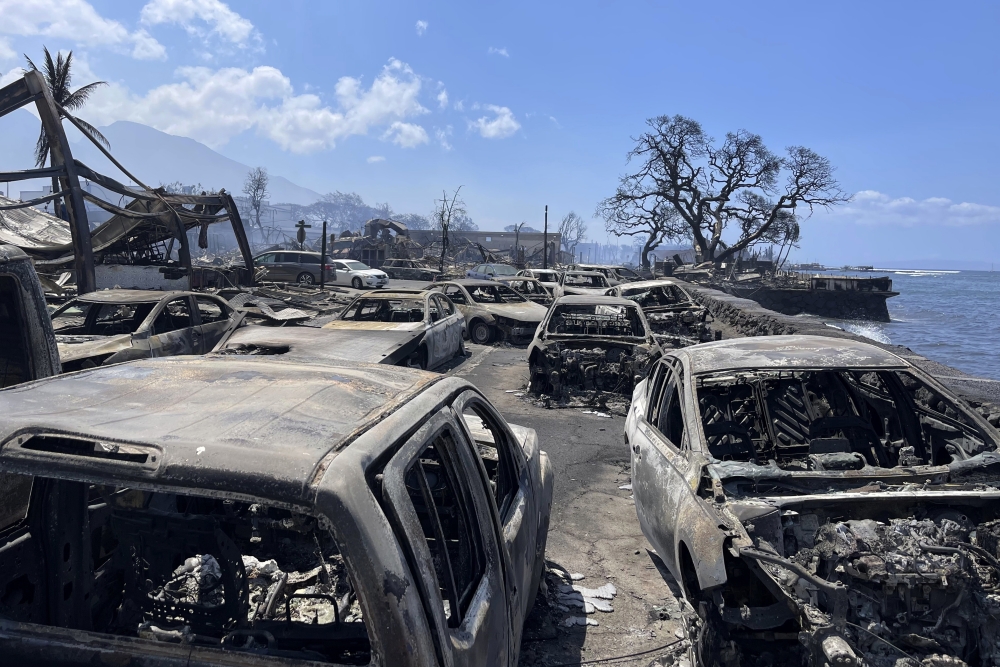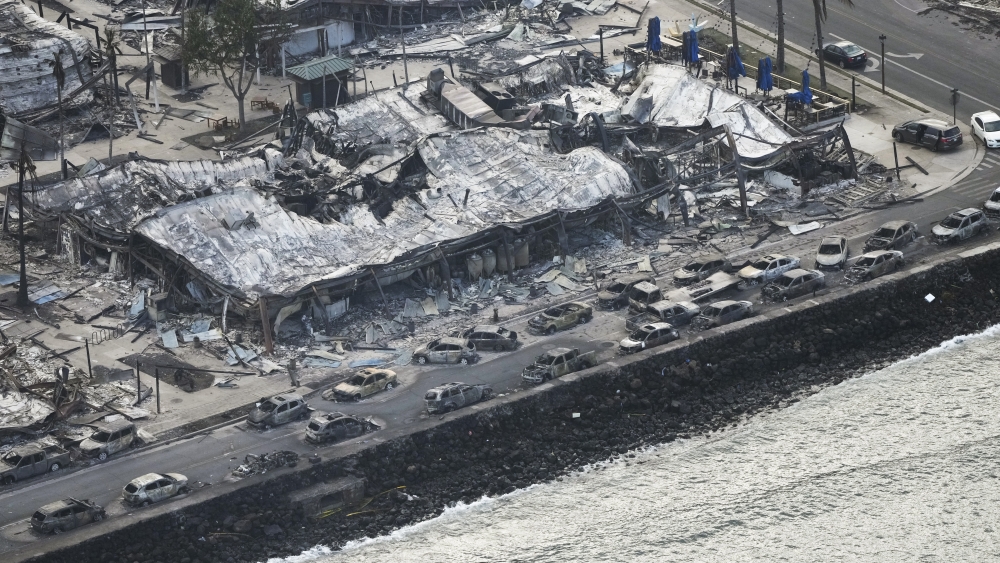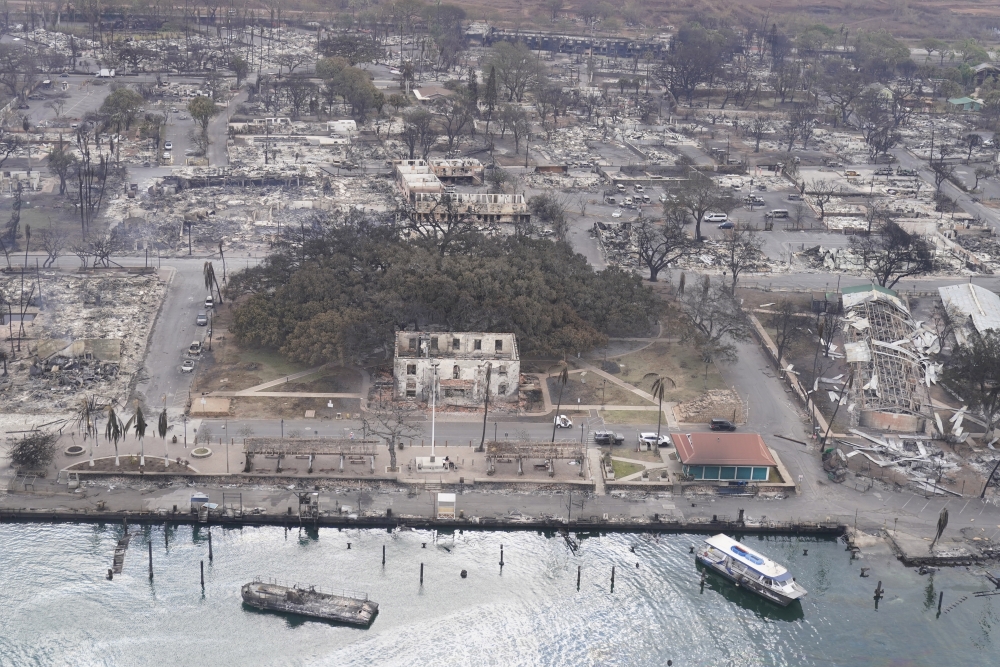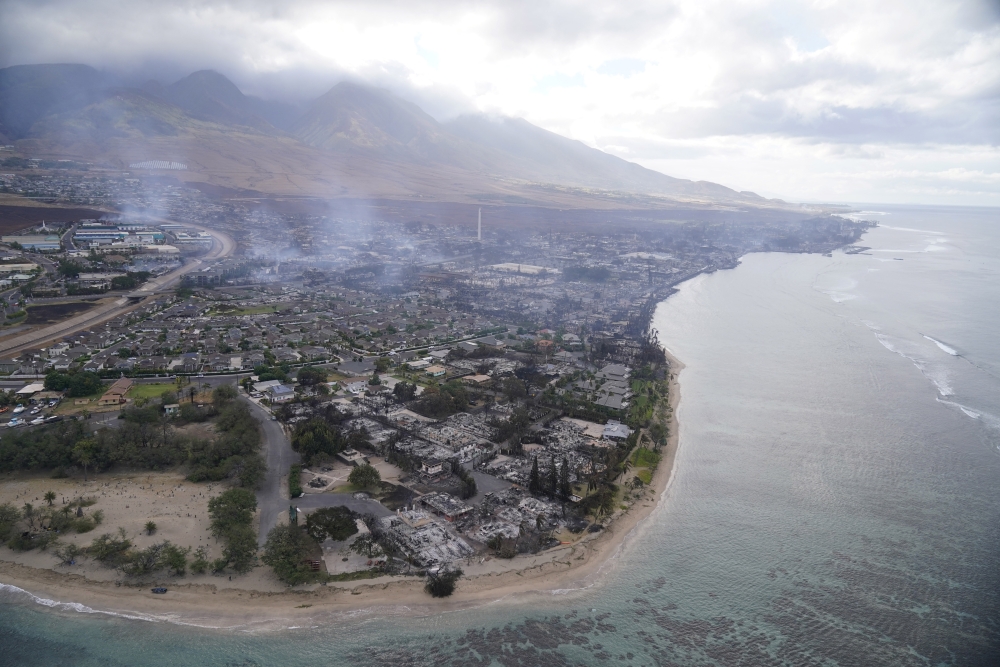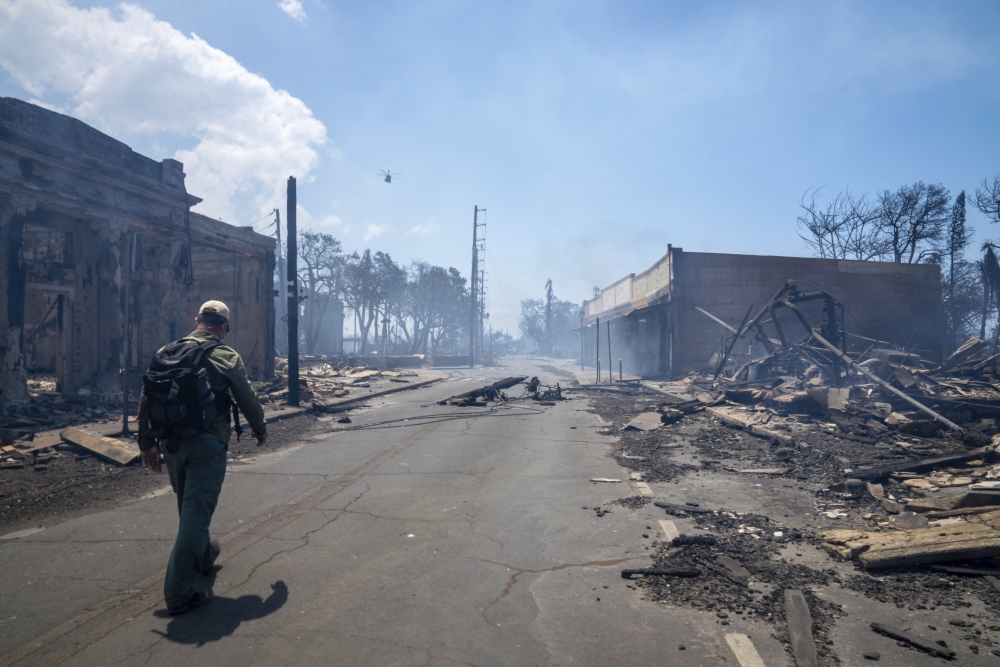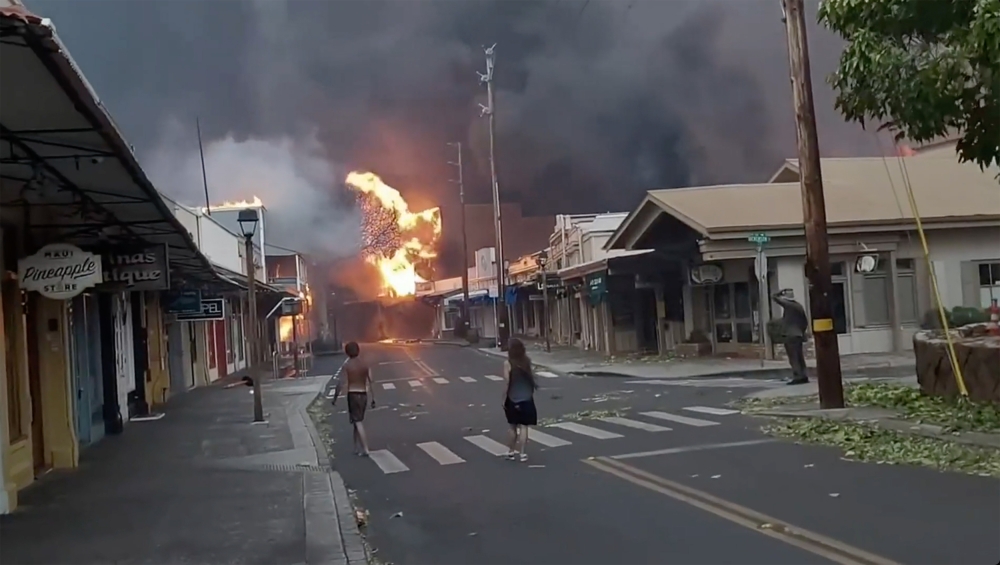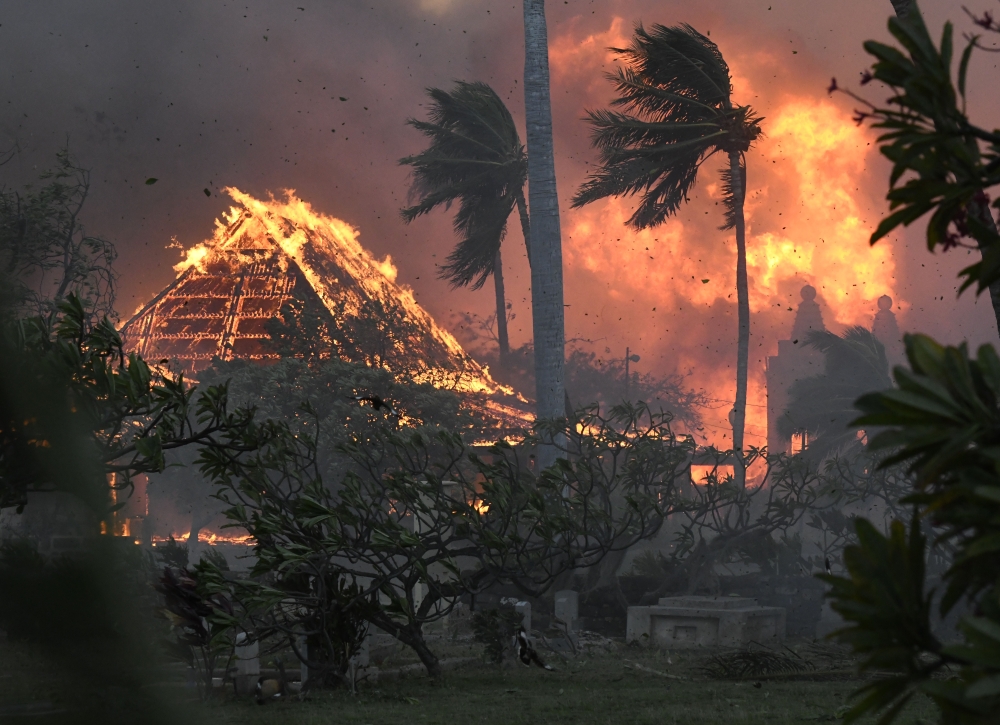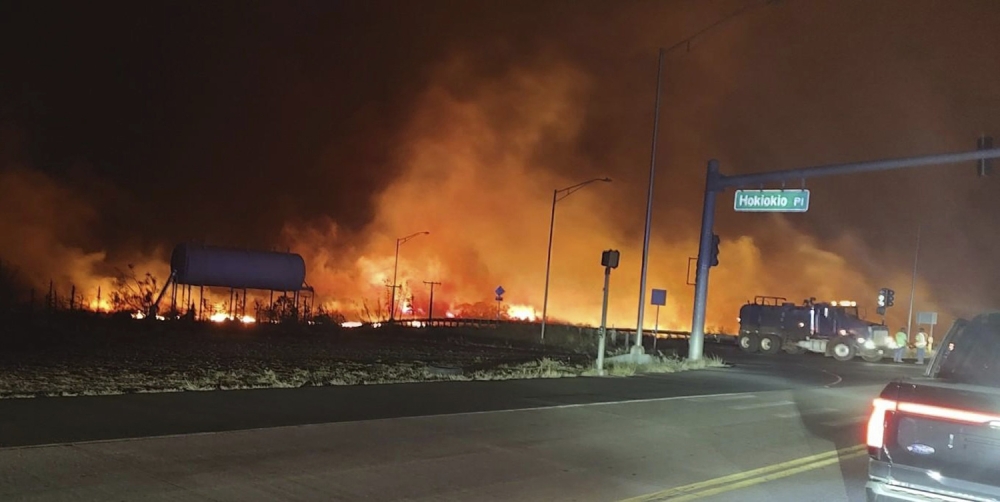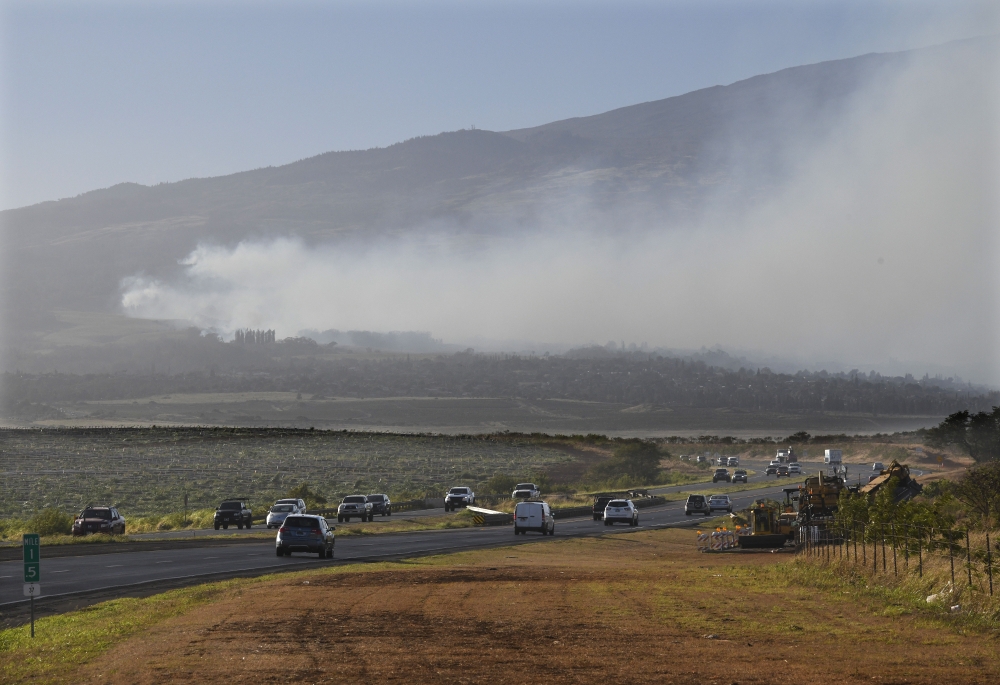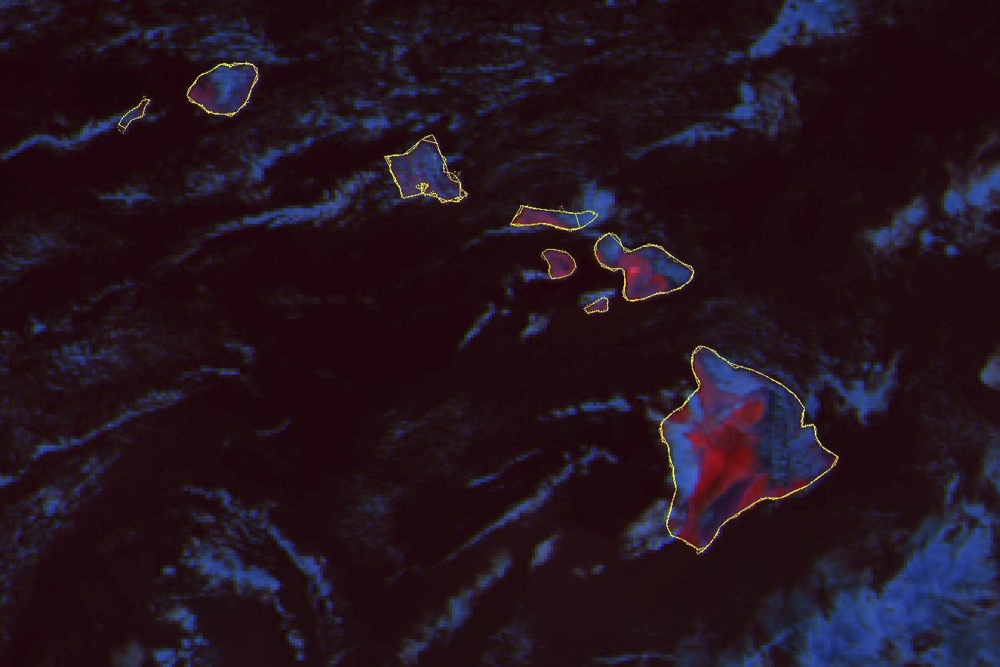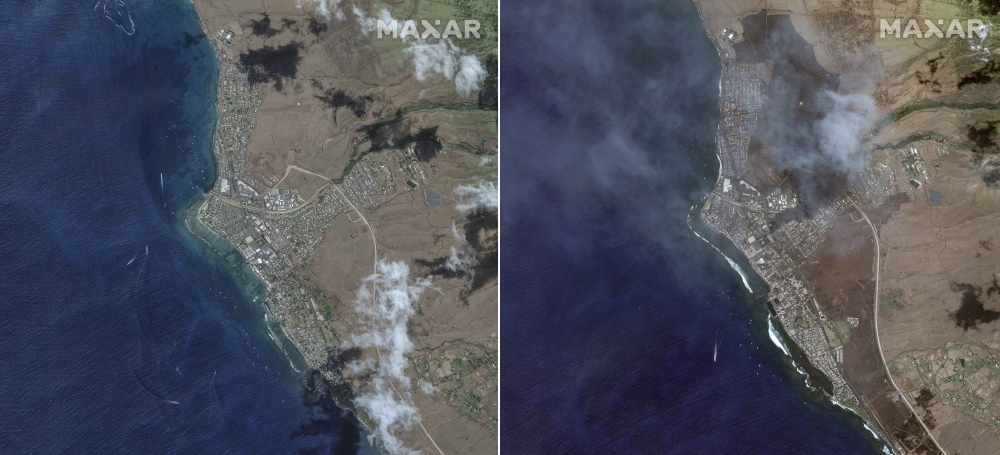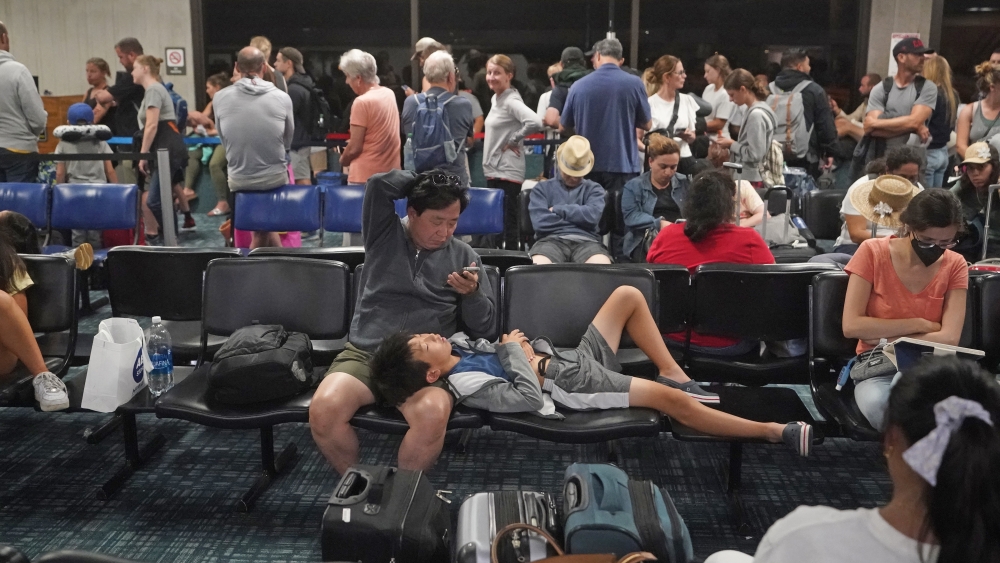WAILUKU, Hawaii — A search of the wildfire devastation on the Hawaiian island of Maui on Thursday revealed a wasteland of obliterated neighborhoods and landmarks charred beyond recognition, as the death toll rose to at least 53 and survivors told harrowing tales of narrow escapes with only the clothes on their backs.
A flyover of historic Lahaina showed entire neighborhoods that had been a vibrant vision of color and island life reduced to gray ash. Block after block was nothing but rubble and blackened foundations, including along famous Front Street, where tourists shopped and dined just days ago. Boats in the harbor were scorched, and smoke hovered over the town, which dates to the 1700s and is the biggest community on the island’s west side.
“Lahaina, with a few rare exceptions, has been burned down,” said Hawaii Gov. Josh Green. More than 1,000 structures were destroyed by fires that were still burning, he said.

This combination of satellite images provided by Maxar Technologies shows an overview of Lahaina on Maui, Hawaii, on June 25, left, and an overview of the same area on Wednesday, following a wildfire that tore through the heart of the Hawaiian island. Maxar Technologies via Associated Press
The death toll will likely rise as search and rescue operations continue, Green added, and officials expect it will become the state’s deadliest natural disaster since a 1961 tsunami killed 61 people on the Big Island.
“We are heartsick,” Green said.
Tiffany Kidder Winn’s gift store Whaler’s Locker, which is one of the town’s oldest shops, was among the many businesses destroyed. As she assessed the damage Thursday, she came upon a line of burned-out vehicles, some with charred bodies inside them.
“It looked like they were trying to get out, but were stuck in traffic and couldn’t get off Front Street,” she said. She later spotted a body leaning against a seawall.
Winn said the destruction was so widespread, “I couldn’t even tell where I was because all the landmarks were gone.”
Fueled by a dry summer and strong winds from a passing hurricane, the fire started Tuesday and took Maui by surprise, racing through parched growth covering the island and then feasting on homes and anything else that lay in its path.
The official death toll stood at 53 late Wednesday, making it the deadliest U.S. wildfire since the 2018 Camp Fire in California, which killed at least 85 people and laid waste to the town of Paradise. The Hawaii toll could rise, though, as rescuers reach parts of the island that had been inaccessible due to the three ongoing fires, including the one in Lahaina that was 80% contained on Thursday, according to a Maui County news release. More than 270 structures have been damaged or destroyed, and dozens of people have been injured, including some critically.
“We are still in life preservation mode. Search and rescue is still a primary concern,” said Adam Weintraub, a spokesperson for Hawaii Emergency Management Agency.
Search and rescue teams still won’t be able to access certain areas until the fire lines are secure and they’re sure they’ll be able to get to those areas safely, Weintraub added.
The flames left some people with mere minutes to act and led some to flee into the ocean. A Lahaina man, Bosco Bae, posted video on Facebook from Tuesday night that showed fire burning nearly every building on a street as sirens blared and windblown sparks raced by. Bae, who said he was one of the last people to leave the town, was evacuated to the island’s main airport and was waiting to be allowed to return home.
Marlon Vasquez, a 31-year-old cook from Guatemala who came to the U.S. in January 2022, said that when he heard the fire alarms, it was already too late to flee in his car.
“I opened the door and the fire was almost on top of us,” he told The Associated Press on Thursday from an evacuation center at a gymnasium. “We ran and ran. We ran almost the whole night and into the next day, because the fire didn’t stop.”
Vasquez and his brother Eduardo escaped via roads that were clogged with vehicles full of people. The smoke was so toxic that he vomited. He said he’s not sure his roommates and neighbors made it to safety.

This photo provided by the County of Maui shows fire and smoke filling the sky from wildfires on the intersection at Hokiokio Place and Lahaina Bypass in Maui, Hawaii on Tuesday. Zeke Kalua/County of Maui via Associated Press
Lahaina residents Kamuela Kawaakoa and Iiulia Yasso described their harrowing escape under smoke-filled skies. The couple and their 6-year-old son got back to their apartment after a quick dash to the supermarket for water, and only had time to grab a change of clothes and run as the bushes around them caught fire.
“We barely made it out,” Kawaakoa, 34, said at an evacuation shelter, still unsure if anything was left of their apartment.
As the family fled, they called 911 when they saw the Hale Mahaolu senior living facility across the road erupt in flames.
Chelsey Vierra’s grandmother, Louise Abihai, was living at Hale Mahaolu, and the family doesn’t know if she got out. “She doesn’t have a phone. She’s 97 years old,” Vierra said Thursday. “She can walk. She is strong.”
Relatives are monitoring shelter lists and calling the hospital. “We got to find our loved one, but there’s no communication here,” said Vierra, who fled the flames. “We don’t know who to ask about where she went.”

The hall of historic Waiola Church in Lahaina and nearby Lahaina Hongwanji Mission is engulfed in flames along Wainee Street on Tuesday, in Lahaina, Hawaii. Matthew Thayer/The Maui News via Associated Press
Communications have been spotty on the island, with 911, landline and cellular service failing at times. Power was also out in parts of Maui.
Tourists were advised to stay away, and about 11,000 flew out of Maui on Wednesday with at least 1,500 more expected to leave Thursday, according to Ed Sniffen, state transportation director. Officials prepared the Hawaii Convention Center in Honolulu to take in the thousands who have been displaced.
In coastal Kihei, southeast of Lahaina, wide swaths of ground glowed red with embers Wednesday night as flames continued to chew through trees and buildings. Gusty winds blew sparks over a black and orange patchwork of charred earth and still-crackling hot spots.
The fires were fanned by strong winds from Hurricane Dora passing far to the south. It’s the latest in a series of disasters caused by extreme weather around the globe this summer. Experts say climate change is increasing the likelihood of such events.
Wildfires aren’t unusual in Hawaii, but the weather of the past few weeks created the fuel for a devastating blaze and, once ignited, the high winds created the disaster, said Thomas Smith an associate professor in Environmental Geography at the London School of Economics and Political Science.
Hawaii’s Big Island is also currently seeing blazes, Mayor Mitch Roth said, although there were no reports of injuries or destroyed homes there.
With communications hampered, it was difficult for many to check in with friends and family members. Some people were posting messages on social media. Maui officials opened a Family Assistance Center at the Kahului Community Center for people looking for the missing.
Maj. Gen. Kenneth Hara, of the Hawaii State Department of Defense, told reporters Wednesday night that officials were working to get communications restored, distribute water and possibly add law enforcement personnel. He said National Guard helicopters had dropped 150,000 gallons of water on the fires.
The Coast Guard said it rescued 14 people who jumped into the water to escape the flames and smoke.
Maui County Mayor Richard Bissen Jr. said Wednesday that officials hadn’t yet begun investigating the immediate cause of the fires.
President Biden declared a major disaster on Maui. Traveling in Utah on Thursday, he pledged that the federal response will ensure that “anyone who’s lost a loved one, or whose home has been damaged or destroyed, is going to get help immediately.” Biden promised to streamline requests for assistance and said the Federal Emergency Management Agency was “surging emergency personnel” on the island.
Associated Press climate and environmental coverage receives support from several private foundations. The AP is solely responsible for all content.
Associated Press writers Nick Perry in Wellington, New Zealand; Andrew Selsky in Bend, Oregon; Bobby Caina Calvan and Beatrice Dupuy in New York; and Chris Megerian in Salt Lake City, Utah, contributed.
Send questions/comments to the editors.

